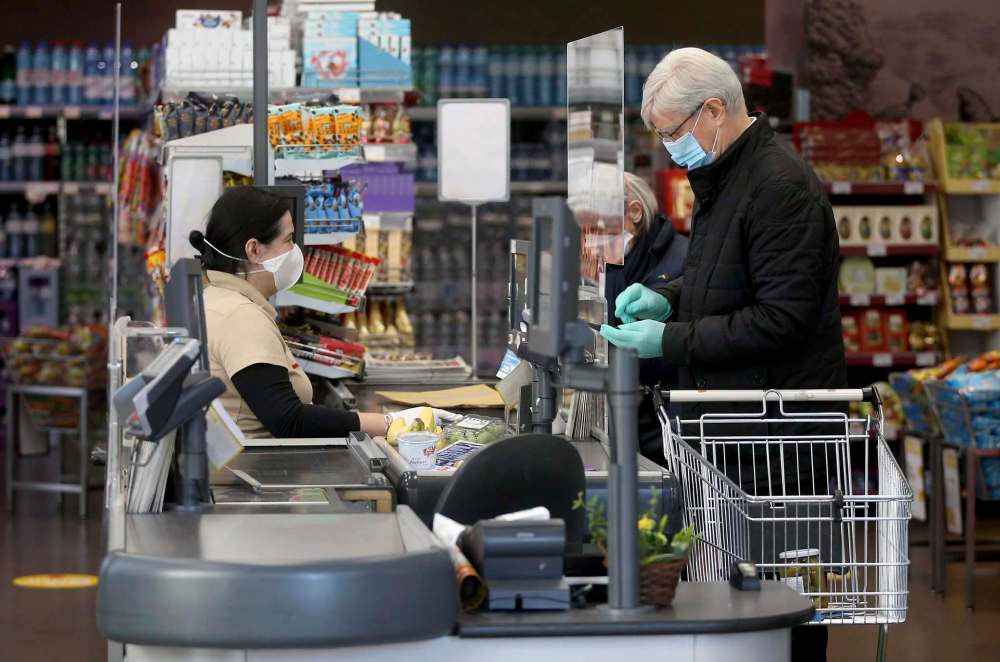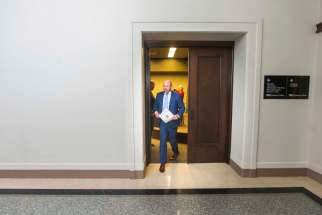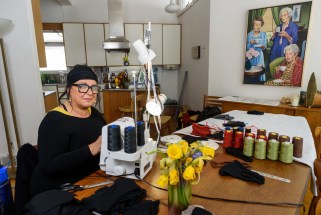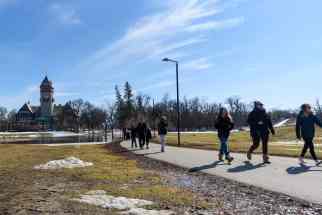Official position on masks takes turn
Read this article for free:
or
Already have an account? Log in here »
To continue reading, please subscribe:
Monthly Digital Subscription
$0 for the first 4 weeks*
- Enjoy unlimited reading on winnipegfreepress.com
- Read the E-Edition, our digital replica newspaper
- Access News Break, our award-winning app
- Play interactive puzzles
*No charge for 4 weeks then price increases to the regular rate of $19.00 plus GST every four weeks. Offer available to new and qualified returning subscribers only. Cancel any time.
Monthly Digital Subscription
$4.75/week*
- Enjoy unlimited reading on winnipegfreepress.com
- Read the E-Edition, our digital replica newspaper
- Access News Break, our award-winning app
- Play interactive puzzles
*Billed as $19 plus GST every four weeks. Cancel any time.
To continue reading, please subscribe:
Add Free Press access to your Brandon Sun subscription for only an additional
$1 for the first 4 weeks*
*Your next subscription payment will increase by $1.00 and you will be charged $16.99 plus GST for four weeks. After four weeks, your payment will increase to $23.99 plus GST every four weeks.
Read unlimited articles for free today:
or
Already have an account? Log in here »
Hey there, time traveller!
This article was published 03/04/2020 (2040 days ago), so information in it may no longer be current.
If there’s a single topic that best encapsulates the confusion, anxiety and shifting streams of “reliable” information associated with the COVID-19 pandemic, it would be the issue of protective face masks.
Wear them? Don’t wear them? No help? Some help? Such a big help they should be considered essential?
The answers depend on who provides the information and on which day they offer it.
Since the outset of the COVID-19 crisis, the perspective of Manitoba’s health-care leaders has been that there is little benefit to be gained by individual citizens wearing face coverings — surgical respirators, painter’s masks or even just scarfs or handkerchiefs — while out in public. As recently as Wednesday, chief public health officer Dr. Brent Roussin said face masks aren’t advised for the public because the virus is spread by direct, prolonged face-to-face exposure.
(If that’s the case, one can’t help wondering why so much emphasis has been placed on frequently washing our hands and constantly disinfecting such surfaces as countertops, doorknobs and shopping cart handles.)

The message has been consistent, in Manitoba and in the majority of jurisdictions beyond our borders. In recent days, however, what amounts to “best practice” for people going out in public has undergone a shift. On Friday, U.S. President Donald Trump urged Americans to follow new advice from the Centers for Disease Control and Prevention by wearing scarves or masks whenever they go out in public.
The rationale for the CDC abandoning its directive that “You do not need to wear a face mask unless you are caring for someone who is sick (and they are not able to wear a face mask)” seems to be new data indicating high rates of transmission involving people who are asymptomatic (not showing any signs of illness) but test positive for COVID-19.
The message has been consistent, in Manitoba and in the majority of jurisdictions beyond our borders. In recent days, however, what amounts to “best practice” for people going out in public has undergone a shift.
The mayors of New York and Los Angeles did not wait for a new CDC directive before advising their citizens to wear face coverings — preferably homemade, so as not to deny a much-needed mask to a health-care worker — whenever they leave home. One can’t help wondering how quickly Canada’s coronavirus response — and, inevitably, Manitoba’s — will be amended to follow the CDC’s lead.
On the surface, the idea of medical professionals advising the public not to wear face protection in public seems counterintuitive — even if such a measure provided only a small measure of protection, it would fall into the same folk-wisdom category that touts chicken soup as a relief from the common cold: there’s no evidence that it helps, but it couldn’t hurt.
There’s a school of thought that suggests officials’ discouraging public use of face masks was an early attempt to minimize panic-buying that would keep viral barriers out of the hands of health workers and front-line workers, and that it’s only now that community transmission of COVID-19 is accelerating that officials feel compelled to sound the alarm.
Whether that argument is based on sound reasoning or just another pandemic-panic conspiracy theory, the fact is that the official position on public use of face masks is changing. It’s yet another unsettling development in a crisis whose definitions, limits and cautions seem to change with every new confirmed case.








